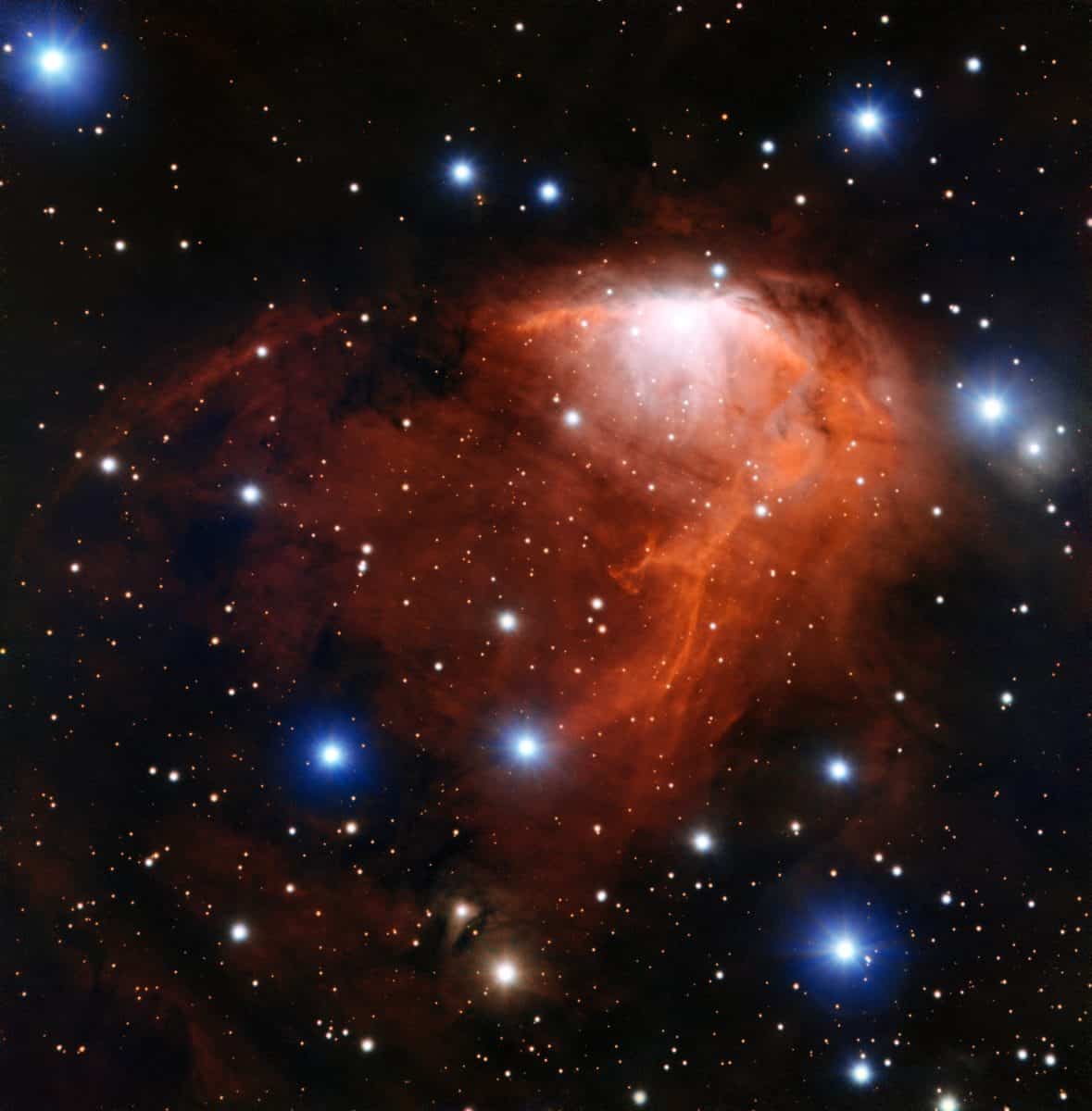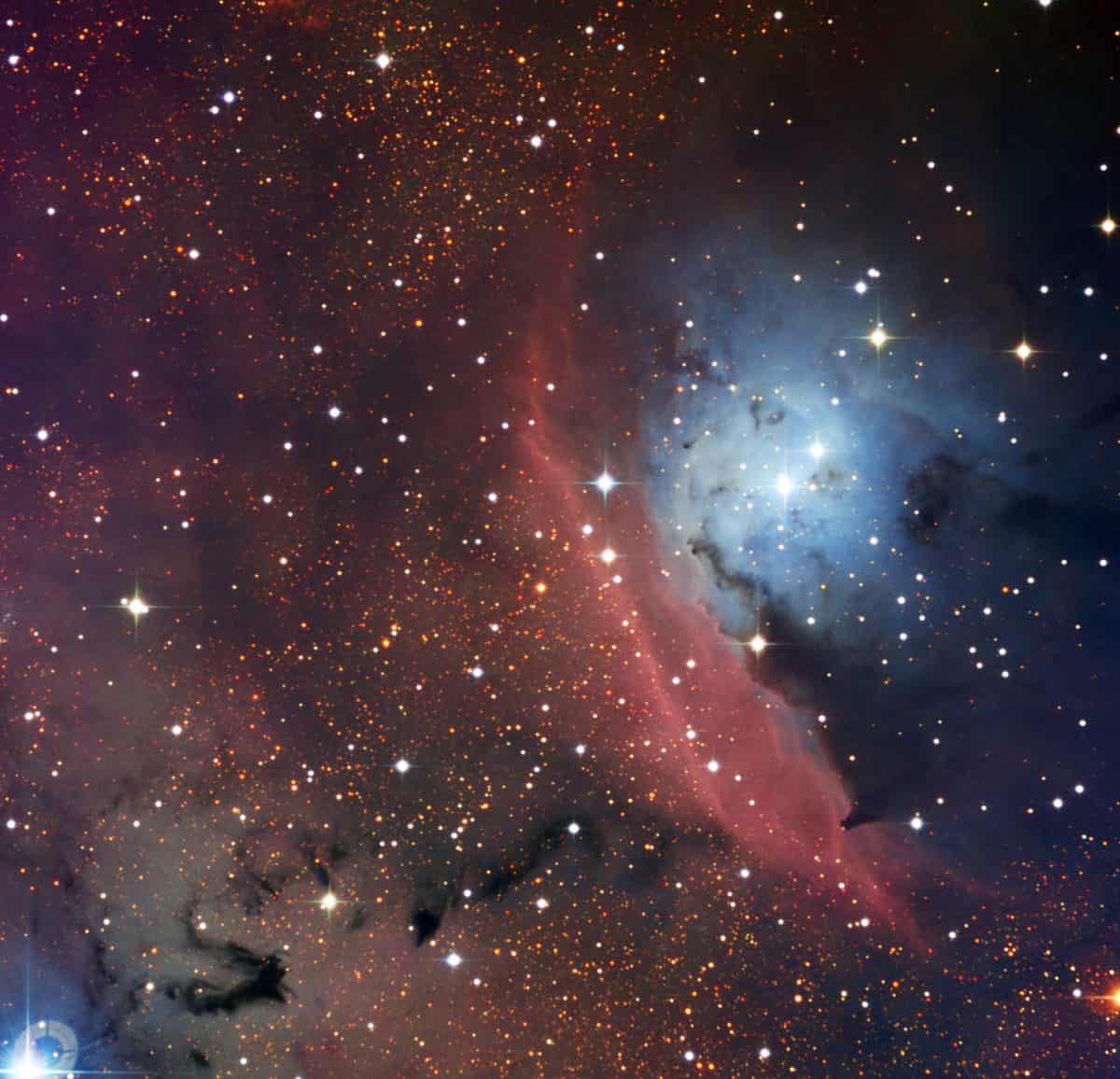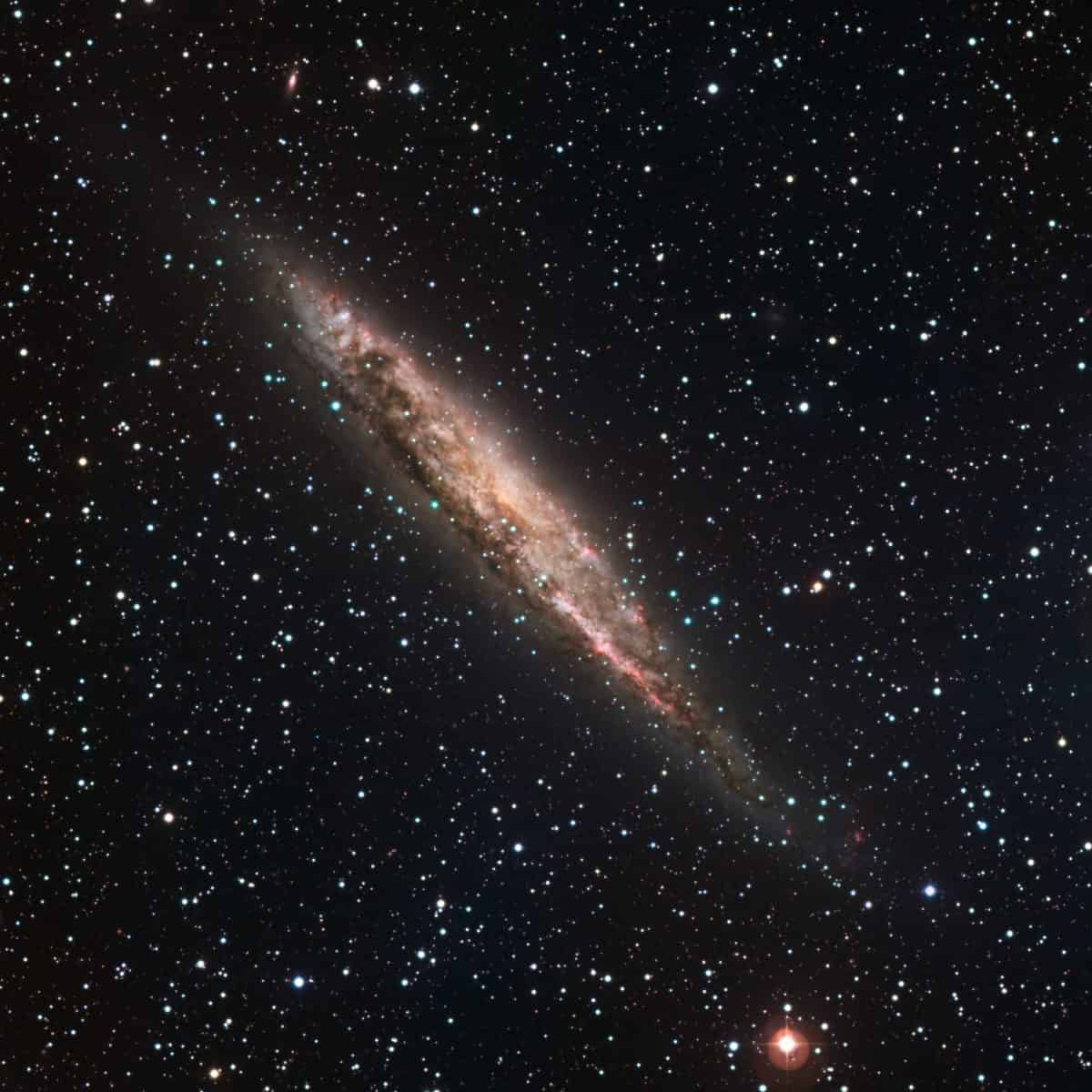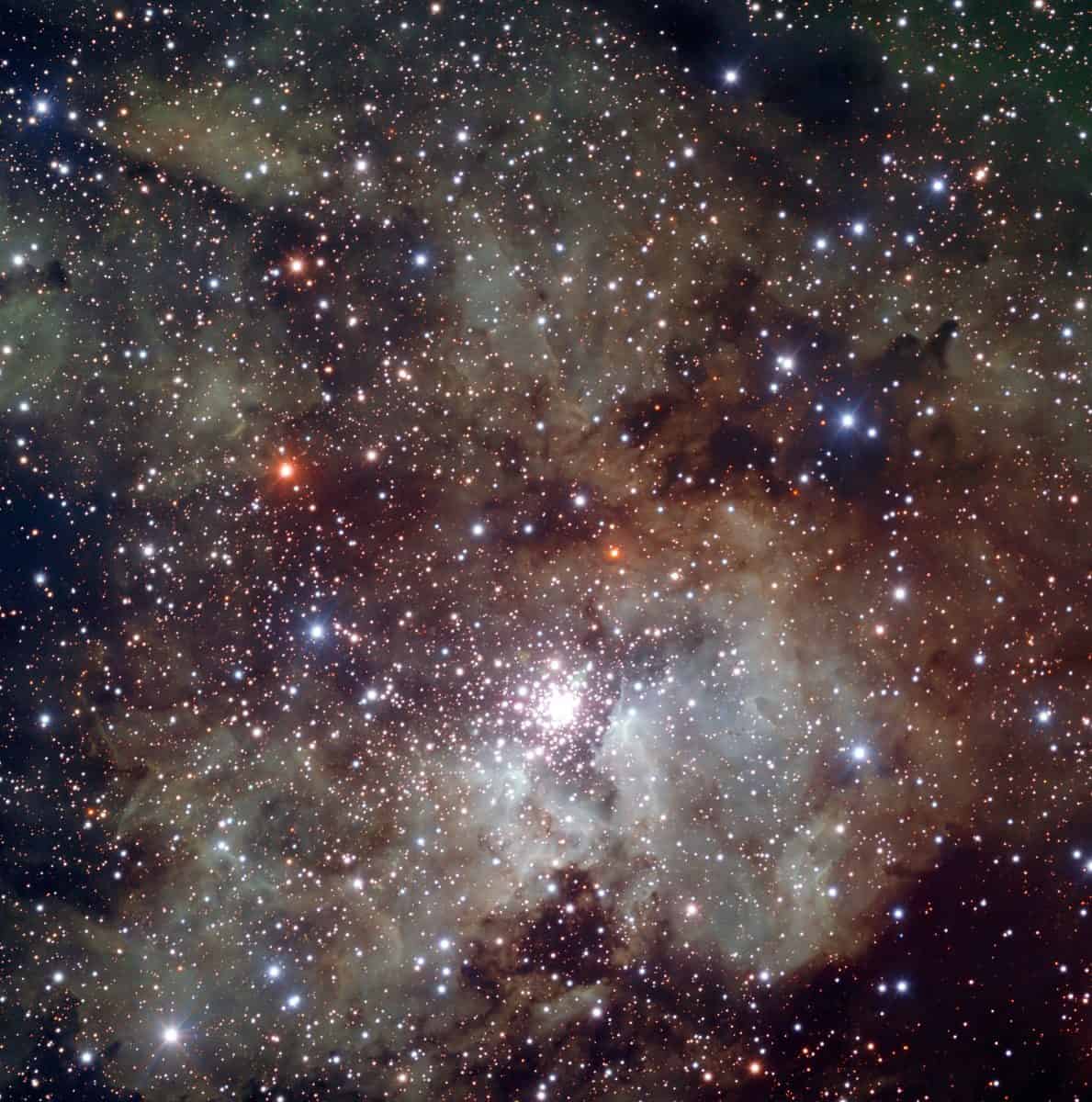Blog
Virelai is a Danish band that plays medieval music with reconstructed instruments from the period. The group is named after the ancient French Virelai dance and love song form from the Middle Ages .
The band performs primarily in medieval markets around the country, but has also released four CDs. The group has also been instrumental in recording music for the Danish film, The Shame’s Daughter , who premiered in 2015.
https://www.youtube.com/watch?v=ms6kS8TzR_E
more...This richly coloured cloud of gas called RCW 34 is a site of star formation in the southern constellation of Vela (The Sails). This image was taken using the FORS instrument on ESO’s Very Large Telescope in northern Chile.
RCW 34, also known as Gum 19, is a star-forming region located in the southern constellation Vela, approximately 8,150 light-years away.
The object is very young, about 2 million years old, and contains a group of massive young stars.
These stars have a dramatic effect on the nebula. Gas exposed to strong UV radiation becomes ionized, meaning that the electrons have escaped the hydrogen atoms.
Stars are born from collapsing gas clouds and therefore abundant in regions with copious amounts of gas, like RCW 34.
This makes the cloud particularly interesting to scientists studying stellar birth and evolution.
Vast amounts of dust within RCW 34 block the view of the inner workings of the stellar nursery.
The nebula is characterized by extremely high extinction, meaning that almost all of the visible light from this region is absorbed before it reaches Earth.
Despite hiding away from direct view, astronomers can use infrared telescopes, to peer through the dust and study the nest of embedded stars.
Thomas Wright “Tom” Scott (born May 19, 1948) is an American saxophonist, composer, and arranger. He was a member of The Blues Brothersand leads the jazz fusion group L.A. Express.
Scott was born in Los Angeles, California. He is the son of prolific film and television composer Nathan Scott, who had more than 850 television credits and more than 100 film credits as a composer, orchestrator and conductor, including the theme songs for Dragnet and Lassie.
Tom Scott’s best-known works are the theme songs for TV series and movies from the 1970s and 1980s — Starsky and Hutch (a track entitled “Gotcha!”) and The Streets of San Francisco, and his soprano sax solo and fills on the 1975 No. 1 hit single “Listen to What the Man Said” for Wings. In 1976 he played the theme I Still Can’t Sleep in Taxi Driver. In 1982, Scott collaborated with Johnny Mathis to write and record two versions – lyrical and instrumental – of “Without Us”, the theme to the 80’s sitcom Family Ties. His version of “Today” (a Jefferson Airplane original) was sampled in the Pete Rock & CL Smooth 1992 hit “They Reminisce Over You (T.R.O.Y.)“. In the Philippines, his best known hit is “Keep This Love Alive”, which is a cut from his 1991 album of the same title, and featured lead vocals by David Pack.
https://www.youtube.com/watch?v=C05bLxgkKaQ
more...Cecil McBee (born May 19, 1935) is an American jazz bassist, one of the most influential in the history of jazz. McBee has recorded as a leader only a handful of times since the 1970s, but has contributed as a sideman to a number of jazz albums.
McBee was born in Tulsa, Oklahoma, on May 19, 1935. He studied clarinet at school, but switched to bass at the age of 17, and began playing in local nightclubs. After gaining a music degree from Ohio Central State University, he spent two years in the army, during which time he conducted the band at Fort Knox. In 1959 he played with Dinah Washington, and in 1962 he moved to Detroit, where he worked with Paul Winter‘s folk-rock ensemble in 1963–64.
more...
Sonny Fortune (born May 19, 1939) is an American jazz saxphonist. Fortune plays soprano, alto, tenor, and baritone saxophones, clarinet, and flute.
After moving to New York City in 1967, Fortune recorded and appeared live with drummer Elvin Jones‘s group. In 1968 he was a member of Mongo Santamaría‘s band. He performed with singer Leon Thomas, and with pianist McCoy Tyner (1971–73). In 1974 Fortune replaced Dave Liebman in Miles Davis‘s ensemble, remaining until spring 1975, when he was succeeded by Sam Morrison. Fortune can be heard on the albums Big Fun, Get Up With It, Agharta and Pangaea, the last two recorded live in Japan.
Fortune joined Nat Adderley after his brief tenure with Davis, then formed his own group in June 1975, recording two albums for the Horizon Records. During the 1990s, he recorded several albums for Blue Note. He has also performed with Roy Brooks, Buddy Rich, George Benson, Rabih Abou Khalil, Roy Ayers, Oliver Nelson, Gary Bartz, Rashied Ali, and Pharoah Sanders, as well as appearing on the live album The Atlantic Family Live at Montreux (1977).
more...
Born in Kinshasa (Congo) of Angolan parents, Sam Mangwana’s story is a rich tapestry of international influences.
Sam Mangwana is one of the prime singers and innovators of Congolese rumba, a musical form which has animated dancers and listeners alike throughout the African continent. Commonly known as soukous, Congolese rumba combines hip-swinging rhythms with lyrical guitars and vocals to create a music whose influence continues to reverberate in the West.
https://www.youtube.com/watch?v=H1qoHke6K0E
more...https://www.youtube.com/watch?v=qGjC9XMt2sM
more...The Danish 1.54-metre telescope located at ESO’s La Silla Observatory in Chile has captured a striking image of NGC 6559, an object that showcases the anarchy that reigns when stars form inside an interstellar cloud. This region of sky includes glowing red clouds of mostly hydrogen gas, blue regions where starlight is being reflected from tiny particles of dust and also dark regions where the dust is thick and opaque.
NGC 6559 is a star-forming region located at a distance of about 5000 light-years from Earth, in the constellation of Sagittarius, showing both emission (red) and reflection (bluish) regions.
more...Kai Chresten Winding (/ˈkaɪ ˈwɪndɪŋ/;[a] May 18, 1922 – May 6, 1983) was a Danish-born American trombonist and jazz composer. He is known for his collaborations with trombonist J. J. Johnson.
Winding was born May 18, 1922 in Aarhus, Denmark. His father, Ove Winding was a naturalized U.S. citizen, thus Kai, his mother and sisters, though born abroad were already U.S. citizens. In September 1934, his mother, Jenny Winding, moved Kai and his two sisters, Ann and Alice. He graduated in 1940 from Stuyvesant High School in New York City and that same year began his career as a professional trombonist with Shorty Allen’s band. Subsequently, he played with Sonny Dunham and Alvino Rey until he entered the United States Coast Guard during World War II.
https://www.youtube.com/watch?v=zVMLvdAO39c
more...Lou Bennett (May 18, 1926, Philadelphia – February 10, 1997, Paris) was an American jazz organist.
Bennett first played bebop on piano, but started playing organ in 1956 after hearing Jimmy Smith. Bennett toured the U.S. with an organ trio between 1957 and 1959, and then moved to Paris in 1960. There he recorded and performed at the Blue Note with Jimmy Gourley and Kenny Clarke (as well as Rene Thomas); he returned to America only once, for the 1964 Newport Jazz Festival. He also recorded in the 1960s with Philip Catherine, Shirley Bunnie Foy and Franco Manzecchi. In the 1980s he played in his own quintet with Gerard Badini, among others. During this period he also toured extensively throughout Spain, including, Almeria, Barcelona, La Coruna, Segovia, and Madrid.
https://www.youtube.com/watch?v=fucD0TxBaqk
more...World Music on Flamenco Fridays with Cameron de la Isla
more...Seen edge-on, observations of NGC 4945 suggest that this hive of stars is a spiral galaxy much like our own Milky Way, with swirling, luminous arms and a bar-shaped centre. Sites of active star formation, known as HII regions, are seen prominently in the image, appearing bright pink. These resemblances aside, NGC 4945 has a brighter centre that likely harbours a supermassive black hole, which is devouring reams of matter and blasting energy out into space. NGC 4945 is about 13 million light-years away in the constellation of Centaurus (the Centaur) and is beautifully revealed in this image taken with data in five bands (B, V, R, H-alpha and S II) with the 2.2-metre MPG/ESO telescope at La Silla. The field of view is 30 x 30 arcminutes. North is up, East is to the left.
more...Henry Saint Clair Fredericks (born May 17, 1942), who uses the stage name Taj Mahal, is an American blues musician, a self-taught singer-songwriter and film composer who plays the guitar, piano, banjo, and harmonica, among many other instruments. He often incorporates elements of world music into his works and has done much to reshape the definition and scope of blues music over the course of his almost 50-year career by fusing it with nontraditional forms, including sounds from the Caribbean, Africa, and the South Pacific.
Born Henry Saint Clair Fredericks, Jr. on May 17, 1942, in Harlem, New York, Mahal grew up in Springfield, Massachusetts. He was raised in a musical environment; his mother was a member of a local gospel choir and his father was an Afro-Caribbean jazz arranger and piano player. His family owned a shortwave radio which received music broadcasts from around the world, exposing him at an early age to world music. Early in childhood he recognized the stark differences between the popular music of his day and the music that was played in his home. He also became interested in jazz, enjoying the works of musicians such as Charles Mingus, Thelonious Monk and Milt Jackson. His parents came of age during the Harlem Renaissance, instilling in their son a sense of pride in his Caribbean and African ancestry through their stories.
more...John Lenwood “Jackie” McLean (May 17, 1931 – March 31, 2006)[1] was an American jazz alto saxophonist, composer, bandleader, and educator, and is one of the few musicians to be elected to the Down Beat Hall of Fame in the year of their death.
McLean was born in New York City. His father, John Sr., played guitar in Tiny Bradshaw‘s orchestra. After his father’s death in 1939, Jackie’s musical education was continued by his godfather, his record-store-owning stepfather, and several noted teachers. He also received informal tutoring from neighbors Thelonious Monk, Bud Powell, and Charlie Parker. During high school he played in a band with Kenny Drew, Sonny Rollins, and Andy Kirk Jr. (the tenor saxophonist son of Andy Kirk).
more...Walter Dewey Redman (May 17, 1931 – September 2, 2006) was an American jazz saxophonist, known for performing free jazz as a bandleader, and with Ornette Coleman and Keith Jarrett.
Redman played mainly tenor saxophone, though he occasionally doubled on alto saxophone, played the Chinese suona (which he called a musette) and on rare occasions played the clarinet.
His son is saxophonist Joshua Redman.
Redman was born in Fort Worth, Texas. He attended I.M. Terrell High School, and played in the school band with Ornette Coleman, Prince Lasha and Charles Moffett. After high school, Redman briefly enrolled in the electrical engineering program at the Tuskegee Institute in Alabama, but became disillusioned with the program and returned home to Texas. In 1953, Redman earned a bachelor’s degree in Industrial Arts from Prairie View Agricultural and Mechanical University.
https://www.youtube.com/watch?v=qEaqZdWVFRg
more...Zimbabwe’s most celebrated young band with their powerful Afro Fusion and Zim Rock music.
more...https://www.youtube.com/watch?v=1_h6bMjTZpw&index=1&list=PLEB3LPVcGcWZ0hsQ5_jgSMhawAnDzy1io
more...NGC 3603 is a starburst region : a cosmic factory where stars form frantically from the nebula’s extended clouds of gas and dust. Located 22,000 light-years away from the Sun, it is the closest region of this kind known in our galaxy, providing astronomers with a local test bed for studying the intense star formation processes, very common in other galaxies, but hard to observe in detail because of their large distance.
The newly released image, obtained with the FORS instrument attached to one of the four 8.2-metre VLT Unit Telescopes at Cerro Paranal, Chile, is a three-colour combination of exposures acquired through visible and near-infrared (V, R, I) filters. This image portrays a wider field around the stellar cluster and reveals the rich texture of the surrounding clouds of gas and dust. The field of view is 7 arcminutes wide.
About 20,000 light-years away
more...More Posts
- World Music with Iona Fyfe
- Daily Roots with Lee Perry & Dennis Alcapone
- XXXII Olympiad 2021
- Carei Thomas Memorial Concert
- HAIR Theatre 55-Caponi Art Park 7pm
- The Cosmos with IC 1396
- L. Subramaniam
- Steve Lacy
- “Champion Jack” Dupree
- Flamenco Fridays with Joselito Acedo
- Daily Roots with Nattali Rize
- The Cosmos with NGC 7814
- Al Di Meola
- Don Henley
- Don Patterson
- Junior Cook
- World Music with Calum Stewart
- Daily Roots with the Ethiopians
- Rhythm Roots Workshop @ MN Veterans Home Adult Day Center
- The Cosmos with 30 Doradus


